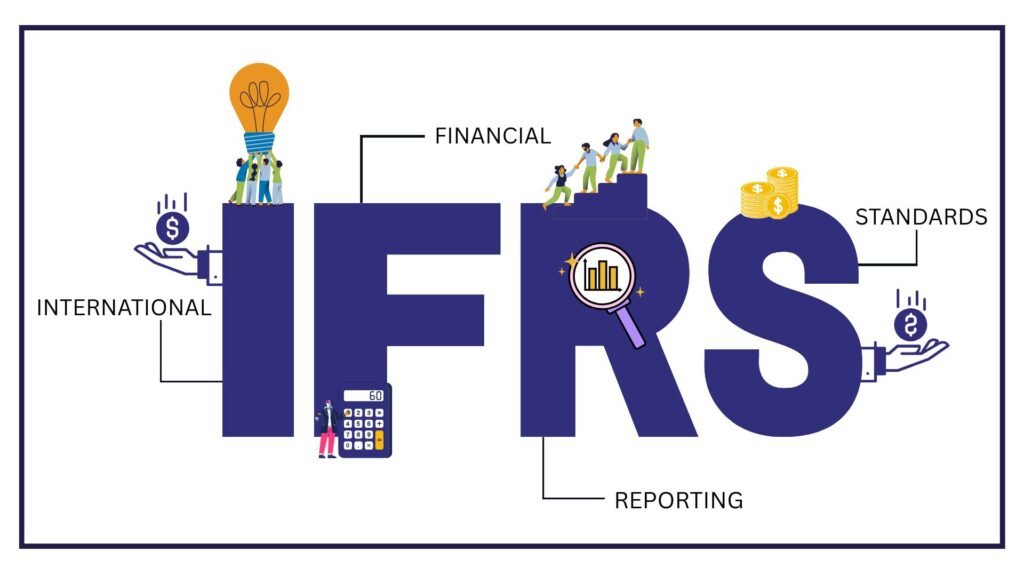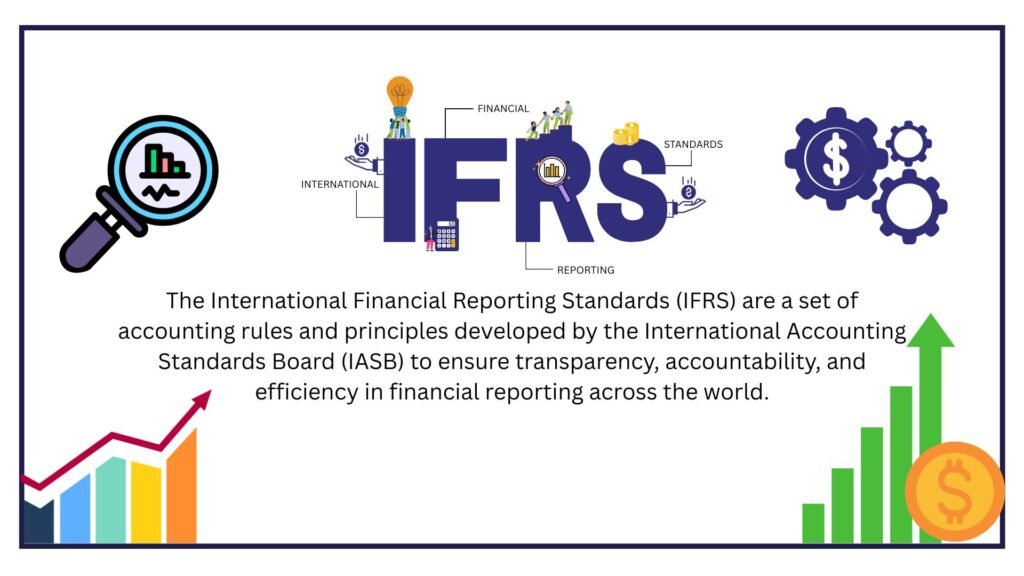
Introduction
The International Financial Reporting Standards (IFRS) are a set of accounting rules and principles developed by the International Accounting Standards Board (IASB) to ensure transparency, accountability, and efficiency in financial reporting across the world.IFRS was introduced to create a common global accounting language, making company accounts understandable and comparable internationally.
History and Development
IFRS was introduced in 2001 by the IASB, which replaced the International Accounting Standards Committee (IASC). The IASC issued International Accounting Standards (IAS) from 1973 to 2001, many of which were adopted by the IASB and continue to be in use today. Over time, the IASB has developed new IFRS standards and revised older IAS standards to meet the evolving needs of businesses and stakeholders.
Major IFRS Standards
Some of the key standards include:
| IFRS No. | Title |
| IFRS 1 | First-time Adoption of International Financial Reporting Standards |
| IFRS 2 | Share-based Payment |
| IFRS 3 | Business Combinations |
| IFRS 4 | Insurance Contracts (to be replaced by IFRS 17) |
| IFRS 5 | Non-current Assets Held for Sale and Discontinued Operations |
| IFRS 6 | Exploration for and Evaluation of Mineral Resources |
| IFRS 7 | Financial Instruments: Disclosures |
| IFRS 8 | Operating Segments |
| IFRS 9 | Financial Instruments |
| IFRS 10 | Consolidated Financial Statements |
| IFRS 11 | Joint Arrangements |
| IFRS 12 | Disclosure of Interests in Other Entities |
| IFRS 13 | Fair Value Measurement |
| IFRS 14 | Regulatory Deferral Accounts (limited application) |
| IFRS 15 | Revenue from Contracts with Customers |
| IFRS 16 | Leases |
| IFRS 17 | Insurance Contracts (replaces IFRS 4 effective 2023) |
| IFRS 18 | Presentation and Disclosures in Financial Statements |
| IFRS 18 | Subsidiaries without Public Accountability: Disclosures |

Purposes of Major IFRS Standards
IFRS 1 – First-time Adoption of International Financial Reporting Standards
IFRS 1 outlines the steps an entity must follow when adopting IFRS for the first time in its general-purpose financial statements. It permits limited exemptions from full IFRS application during initial adoption. A revised version of IFRS 1 was issued in November 2008 and is effective for entities whose first IFRS financial statements begin on or after 1 July 2009.
IFRS 2 – Share-based Payment
IFRS 2 requires companies to recognize share-based payment transactions, such as shares, stock options, or share appreciation rights, in their financial statements. This includes arrangements with employees or other parties settled in cash, other assets, or equity instruments. It provides guidance for equity-, cash-, and choice-settled payments. It was issued in February 2004 and became effective for annual periods beginning on or after 1 January 2005.
IFRS 3 – Business Combinations
IFRS 3 governs how companies should account for business combinations, such as mergers or acquisitions, using the acquisition method. It requires the assets acquired and liabilities assumed to be measured at fair value on the acquisition date. A revised version was issued in January 2008 and applies to business combinations occurring in annual periods starting on or after 1 July 2009.
IFRS 4 – Insurance Contracts
IFRS 4 applies to most insurance and reinsurance contracts issued or held by an entity. It serves as an interim standard, allowing insurers to maintain existing practices temporarily while exempting them from some IFRS requirements, including those in IAS 8. Issued in March 2004, IFRS 4 is effective for periods starting on or after 1 January 2005. It is set to be replaced by IFRS 17 from 1 January 2023.
IFRS 5 – Non-current Assets Held for Sale and Discontinued Operations
IFRS 5 provides guidance for the classification, measurement, and presentation of non-current assets held for sale or distribution. These assets (or disposal groups) are not depreciated and are measured at the lower of carrying amount and fair value less costs to sell. They must be presented separately in the financial statements. The standard also mandates disclosures for discontinued operations. It was issued in March 2004 and became effective on 1 January 2005.
IFRS 6 – Exploration for and Evaluation of Mineral Resources
IFRS 6 allows entities in the extractive industries to retain existing accounting policies for exploration and evaluation costs upon adopting IFRS. It introduces different impairment testing approaches and allows grouping of assets for impairment testing. The standard was issued in December 2004 and applies from 1 January 2006.
IFRS 7 – Financial Instruments: Disclosures
IFRS 7 requires disclosures that highlight the importance of financial instruments to an entity and the risks associated with them. Both qualitative and quantitative disclosures are required, particularly in relation to credit risk, liquidity risk, market risk, and transferred financial assets. Issued in August 2005, it became effective on 1 January 2007.
IFRS 8 – Operating Segments
IFRS 8 requires listed entities and those with publicly traded securities to disclose financial and descriptive information about their operating segments, products, services, geographical areas, and major customers. Segment identification and measurements must reflect internal management reports. It was issued in November 2006 and became effective on 1 January 2009.
IFRS 9 – Financial Instruments
IFRS 9 replaces IAS 39 and includes requirements for the classification, measurement, impairment, derecognition, and hedge accounting of financial instruments. It introduces an expected credit loss model and simplifies hedge accounting processes. The final version was issued on 24 July 2014 and applies to annual periods starting on or after 1 January 2018.
IFRS 10 – Consolidated Financial Statements
IFRS 10 provides guidance on when and how an entity should prepare consolidated financial statements. Control is established when an investor has power over an investee, exposure to variable returns, and the ability to affect those returns. The standard was issued in May 2011 and is effective from 1 January 2013.
IFRS 11 – Joint Arrangements
IFRS 11 outlines the accounting for joint arrangements based on the nature of the rights and obligations. It classifies such arrangements into joint operations (accounted for by recognizing assets and liabilities) and joint ventures (accounted for using the equity method). Issued in May 2011, the standard is effective from 1 January 2013.
IFRS 12 – Disclosure of Interests in Other Entities
IFRS 12 requires detailed disclosures regarding an entity’s interests in subsidiaries, joint arrangements, associates, and unconsolidated structured entities. It emphasizes disclosure objectives supported by extensive guidance. The standard was issued in May 2011 and is effective for periods beginning on or after 1 January 2013.
IFRS 13 – Fair Value Measurement
IFRS 13 sets out a unified definition and framework for fair value measurement across all IFRSs. It adopts an exit price concept and introduces a fair value hierarchy to categorize inputs used in valuation. The standard was issued in May 2011 and applies to annual periods beginning on or after 1 January 2013.
IFRS 14 – Regulatory Deferral Accounts
IFRS 14 allows first-time IFRS adopters to continue recognizing regulatory deferral account balances under their previous GAAP. These balances must be presented separately in financial statements and disclosed in detail. Issued in January 2014, it applies to an entity’s first IFRS financial statements for periods starting on or after 1 January 2016.
IFRS 15 – Revenue from Contracts with Customers
IFRS 15 introduces a single, principle-based five-step model for revenue recognition across all industries. It enhances disclosure requirements to provide clear, relevant information about revenue and cash flows from contracts. Issued in May 2014, it is effective for annual periods beginning on or after 1 January 2018. Clarifying amendments were issued in April 2016.
IFRS 16 – Leases
IFRS 16 introduces a unified lessee accounting model requiring the recognition of lease liabilities and right-of-use assets for most leases. Short-term leases and low-value assets are exempt. Lessor accounting remains largely unchanged from IAS 17. Issued in January 2016, IFRS 16 is effective for periods beginning on or after 1 January 2019.
IFRS 17 – Insurance Contracts
IFRS 17 replaces IFRS 4 and establishes comprehensive principles for the recognition, measurement, presentation, and disclosure of insurance contracts. It aims to improve comparability and transparency and introduces the concept of a Contractual Service Margin (CSM). The standard was issued in May 2017 and is effective from 1 January 2023.
IFRS 18 – Presentation and Disclosure in Financial Statements
Issued in April 2024, IFRS 18 introduces updated requirements for how financial statements are presented and what disclosures are required across all IFRS-compliant entities. It enhances comparability and standardization. The standard is effective for annual periods beginning on or after 1 January 2027.
IFRS 19 – Subsidiaries without Public Accountability: Disclosures
IFRS 19 allows eligible entities (typically subsidiaries of public companies) to apply reduced disclosure requirements instead of full IFRS disclosures. This standard was issued in May 2024 and is effective for reporting periods beginning on or after 1 January 2027.
Benefits of IFRS
- Facilitates cross-border investments.
- Increases investor confidence and comparability.
- Simplifies accounting for multinational companies.
- Enhances access to global capital markets.
Challenges of IFRS Adoption
- High initial implementation cost.
- Need for extensive training and system changes.
- Differences in interpretation due to principle-based nature.
- Complexity in aligning with local regulatory frameworks.
Global Adoption
As of 2025, over 140 jurisdictions have adopted or permit IFRS for domestic companies. However, notable exceptions include the United States, which continues to use GAAP. Countries like India and China have adopted IFRS-converged standards, adapting IFRS to their local economic environments.

